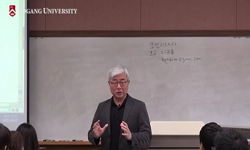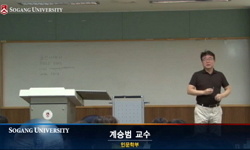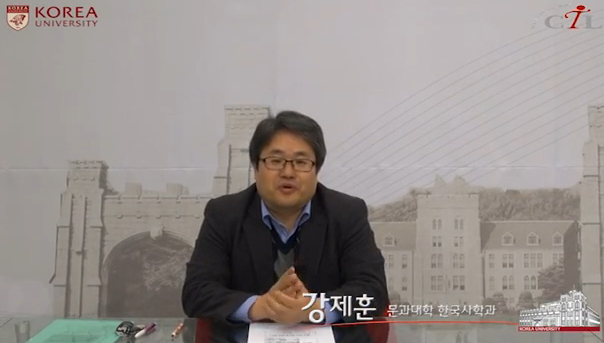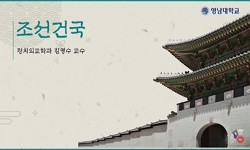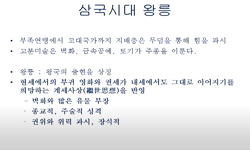2000년대 이후 대규모 발굴조사와 함께 조선시대 토광묘 유적은 보고서를 통해 알려지고 있다. 전북지역은 현재까지 44개 유적, 2,539기의 토광묘가 확인되었으며, 중요 유물인 자기류는 총 357...
http://chineseinput.net/에서 pinyin(병음)방식으로 중국어를 변환할 수 있습니다.
변환된 중국어를 복사하여 사용하시면 됩니다.
- 中文 을 입력하시려면 zhongwen을 입력하시고 space를누르시면됩니다.
- 北京 을 입력하시려면 beijing을 입력하시고 space를 누르시면 됩니다.
부가정보
국문 초록 (Abstract)
2000년대 이후 대규모 발굴조사와 함께 조선시대 토광묘 유적은 보고서를 통해 알려지고 있다. 전북지역은 현재까지 44개 유적, 2,539기의 토광묘가 확인되었으며, 중요 유물인 자기류는 총 357점이 출토되었다.
토광묘는 축조형태, 내부시설, 부장양상 등의 특징을 통해 4단계의 변화모습이 확인되었다. 1단계는 일단굴광의 형태로서 내부시설인 요갱이 확인되며, 유물은 인화문의 분청사기가 요갱 또는 바닥면에서 주로 출토된다. 2단계는 일단굴광의 형태로서 벽감에 유물을 부장하는 전통이 유지되고, 관 상면·상부 퇴적토에 부장하는 모습으로 변화되어 가는 모습을 띤다. 유물은 귀얄·덤벙기범을 사용한 분청사기와 백자가 출토된다. 3단계는 전 단계에서 보이지 않는 이단굴광의 묘제 유형이 새롭게 나타나는 시기이다. 유물은 일단굴광 관 상면·상부퇴적토에 백자를 부장하는 모습이 일반되는 경향을 띤다. 4단계는 이단굴광의 토광묘가 이전 단계에 비해서 증가하는 시기이며, 유물의 부장이 거의 사라지거나 명맥을 유지하는 단계이다.
이글에서는 전북지역에서 확인되는 조선시대 토광묘의 단계별 변화상에 대한 고찰을 진행하였다. 다만, 토광묘에 대한 분석에 있어서 지역적인 한계가 있어 보인다. 이러한 점은 자료의 확대와 더불어 지속적으로 연구하여 보완하고자 한다.
다국어 초록 (Multilingual Abstract)
Excavation has increased by the large-scale projects since 2000s, and the discovery of remains like pit tombs Joseon Dynasty have been known through reports. To date, 2,539 pit tombs have been found in 44 sites and 357 pieces of pottery have been exc...
Excavation has increased by the large-scale projects since 2000s, and the discovery of remains like pit tombs Joseon Dynasty have been known through reports. To date, 2,539 pit tombs have been found in 44 sites and 357 pieces of pottery have been excavated.
For such analysis result, this study was to establish Jeonbuk the pit tombs as total 4 stages, and this study has found out that the structure and relics of pit tombs by stage showed the aspects of temporal change.
From the result of this research above, it may be summed up as follows.
At the first stage, one-stage construction type of pit tombs appears it, and the waist pit is confirmed. Most of relics are stably located on the bottom surface or the waist pit. The application of Buncheong ware mainly appears stamped design. At the second stage, Like previous stage, one-stage construction type of pit tombs appears it. It assumes the aspect that it is changed into buring in the top side of coffin·upper deposit soil as well as maintains the tradition to bury the relics in the niche. The relics has aspect that the associated Buncheong ware and white porcelain are buried, and Kuiyaal·Dumbung technique are mainly used in the composition of Buncheong ware. At the third stage, Two-stage construction type of burial pattern, which is not shown in the previous, newly appears. The relics show the tendency that it is generalized to bury top side of coffin·upper deposit soil, and white porcelain are buried. At the fourth stage, Two-stage construction type of pit tombs increases compared with the previous stage, and at this stage, the burial of relics almost disappears.
In this paper, I examined the phased changes of the tombs of the Joseon Dynasty in Jeonbuk area. However, There seems to be a regional limit to the analysis of pit tombs. This point will be supplemented by continuous research along with the expansion of data.
동일학술지(권/호) 다른 논문
-
- 전북대학교 인문학연구소
- 하영미
- 2024
- KCI등재후보
-
- 전북대학교 인문학연구소
- 김경민
- 2024
- KCI등재후보
-
탈식민적 미술 담론의 플랫폼으로서 비엔날레― 2018 광주비엔날레를 중심으로 ―
- 전북대학교 인문학연구소
- 정은진
- 2024
- KCI등재후보
-
A Uniform Analysis to English such
- 전북대학교 인문학연구소
- 이종화
- 2024
- KCI등재후보





 KCI
KCI KISS
KISS